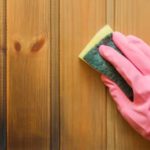You’ve developed a routine habit of using the sauna or steam room and are reaping the benefits. Does getting a brand new tattoo mean you will have to interrupt this routine and how long until it is safe to resume using the sauna or steam room?
After getting a new tattoo, you should avoid saunas and steam rooms until your tattoo has completely healed. It will take your tattoo 2 to 5 weeks to heal depending upon your age, the placement of the tattoo, the type of tattoo, the skill of your tattoo artist and your adherence to aftercare instructions.
Using the sauna and steam room causes a large amount of sweat and moisture to accumulate on your skin. When you have a large scab on your skin, excessive moisture can cause the scab to become more delicate, break apart, and leave an open wound. You especially do not want the scab to break apart when you have a new tattoo.
When you get a tattoo, your tattoo artist injects ink into the skin by making thousands of small puncture wounds. These small wounds will bleed and form a scab. Because the scab is directly attached to the piece of artwork on your arm, you want the scab to be as thin as possible and to shed away naturally from your arm until heals and is replaced by protective scar tissue.
For these reasons, you want to avoid the sauna and steam room until your tattoo has completely healed.
Heatandsteam.com may receive commissions on purchases made from the links on this page.
How long does it take for a tattoo to fully heal?
Many sources recommend waiting until a tattoo is fully healed before entering a sauna, steam room, hot tub and the like. It will normally take 2 to 5 weeks for a tattoo to completely heal. This will vary according to individual, to the tattoo location, and adherence to aftercare.
Everyone heals at different rates. Typically, the amount of time it takes to heal from an injury, including a skin injury increases, as one gets older. The same wound, which would heal rapidly at age 20, can become virtually non-healing by the age 50.
Some locations on the body are quicker and easier to heal than others. Because of the friction caused by constant bending, tattoos on the knees and elbows will take longer to heal and are more prone to scabbing.
The quality of your tattoo will also affect the amount of time it takes to heal. A less skilled artist may cause more trauma by penetrating the needle too deep into the skin or by overworking certain areas of the skin. Tattoos made by more skilled and gentler artists will heal much faster.
Finally, the quality of your own aftercare will affect the amount of time it takes to heal. Remember to (1) follow the advice of your tattoo artist, (2) wash gently with antibacterial soap, (3) protect your scab, (4) moisturize regularly and (5) avoid excessive moisture.
RULE NUMBER 1: Follow the Advice of Your Tattoo Artist
Pay attention to the specific aftercare advice from your tattoo artist, as different types of tattoos will require different types of after care. For example, the after care instructions for a line tattoo will likely be different than a portrait. Your tattoo artist should be knowledgeable about aftercare and provide detailed aftercare instructions tailored specifically to your tattoo.
Ask your tattoo artist about aftercare BEFORE you get your tattoo. If your tattoo artist doesn’t seem knowledgeable and doesn’t provide informative advice, then you should ask yourself if this is really the person that you want to permanently mark your skin.
RULE NUMBER 2: Wash Gently With Antibacterial Soap
Immediately after getting your tattoo, your tattoo artist will wrap your arm in a plastic bandage. This bandage will stop the bleeding and allow a scab to form. This bandage should not be removed for several hours.
Once the wrap is removed, you should gently wash your tattoo immediately with an antibacterial soap, like this. Look for one specifically labeled for use with sensitive skin. Don’t scrub the skin with anything abrasive. Simply rub the soap with your fingers and dab it dray with a paper towel. You should continue to wash the tattoo twice a day until the skin is fully healed
RULE NUMBER 3: Protect Your Scab
A few hours after getting a new tattoo, it will begin to form a crust and scab. This scab will hold the ink in place until till permanent scar tissue forms. At this point, your goal should be to keep the scab intact, allowing it to fall off naturally. This should take about two weeks. Avoid picking at it or scratching it.
At this stage, you should focus on avoiding water and deliberately trying not to sweat because it will cause the scab to come apart before flaking and falling off naturally.
In addition to setting back the healing process, when clumps of scab come off early, they will take some of the ink with it. This has the potential to leave faint spots on your tattoo.
RULE NUMBER 4: Keep it Moist—The Right Way
Now that you’ve learned to keep your scab dry and intact, it is time to learn how to keep it moist. While the scab serves its purpose of stopping bleeding and keeping bacteria out, an overly dry scab can crack and present the same problem as an overly wet scab. Finding the right middle ground can be achieved by applying the right kind of cream or lotion.
There are some tattoo balms specifically designed for tattoo aftercare, but Aquaphor is the most commonly advised ointment, when it comes to treating and protecting new tattoos. You should keep a thin layer of Aquaphor on your tattoo for as long as the skin is scabby or flakey. Aquaphor creates a seal which keeps allows the wound to breath and prevents it from drying out.
Use Aquaphor on your tattoo 3 to 5 times a day until the tattoo is fully healed. Be careful not to use too much Aquaphor as it could clog pores. Apply just enough to lightly coat your tattoo. Any excess amount, which isn’t rubbed into the affected area, should be wiped off. You should err on the side of using too little, rather than too much.
RULE NUMBER 5: Avoid the Following Activities Until the Skin Has Healed
As discussed above, you want to avoid getting a new tattoo overly moist. You should avoid steam rooms and steam showers, as the steam will be absorbed into the scab. You should also avoid dry and infrared saunas because the sweat alone is likely to damage the scab. You should even avoid exercising, if it will cause you to sweat.
Since you can’t use a sauna or steam room because of the risk of excessive moisture, then you definitely can’t do anything, which would cause the tattoo to soak in water. As such, baths, hot tubs, Jacuzzis, and regular old swimming should be avoided until the skin has healed.
Look for These Signs that Your Tattoo Has Healed
For the first week or so, after getting a tattoo, your skin will be a little red and swollen and will likely ooze a little bit every now and then. This is normal and not a cause for concern, but it does mean that your tattoo is not yet healed.
For one to three weeks after this, your skin will be visibly less inflamed. It will probably start to itch as the scabs and dead skin cells begin to flake off.
Once all the scabs and dead skin are gone and your skin begins to look normal again, you will know that your skin has sufficiently healed and that it is ok to use the sauna and steam room again.
Can I Use the Sauna After A Laser Tattoo Removal?
You shouldn’t use a sauna, steam room, Jacuzzi, or any kind of bath for the first 48 hours after getting laser tattoo removal. If afterwards there is still any kind of blistering on the skin, you should continue to avoid these until the blistering has healed.


